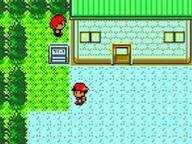Quiz Answer Key and Fun Facts
1. If the accuracy of a Pokemon is lowered five stages, how many times should we expect it to hit with a 100% accurate attack such as Flamethrower?
2. If you catch a wild Pokemon, what will its happiness value be?
3. Frustration and Return reach their maximum base power when the user has a happiness value of 0 and 255 respectively. What is their minimum possible base power under totally unfavorable conditions?
4. Pokemon will grow slower or faster depending on the experience group they belong to. With the amount of experience points required to raise sixteen Pokemon of the slow experience group to level 100, how many Pokemon of the fast experience group could I have raised to the same level?
5. In the bug catching contest, the players are awarded points depending of the Pokemon caught. Apart from the DVs and stats of the Pokemon, which of the following has effect of the score given?
6. When Headbutt is used on a tree, a Pokemon will not always fall out. To calculate the probability of getting a Pokemon, the game creates a formula that depends on which values?
7. If the player has no badges, what is the chance that a level 13 traded Pokemon becomes disobedient when attempting to move?
8. In any given cave or in any given route with tall grass, which is the maximum possible number of different species of Pokemon that can be found (assuming the time of the day stays the same)?
9. Which of the following Unown forms can be shiny?
10. Each trainer has set DVs for his/her Pokemon depending on which trainer class it belongs to (Youngster, Lass, Leader Falkner, Leader Bugsy, Elite Four Will, Rival...). Which are the DVs of male Rocket Grunt's Pokemon?
(This is sorted as Attack/Defense/Speed/Special.)
Source: Author
Crystal_
This quiz was reviewed by FunTrivia editor
kyleisalive before going online.
Any errors found in FunTrivia content are routinely corrected through our feedback system.
